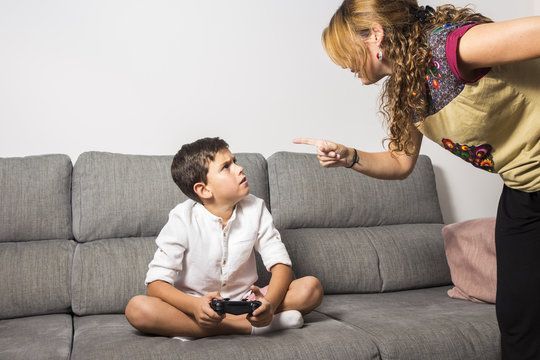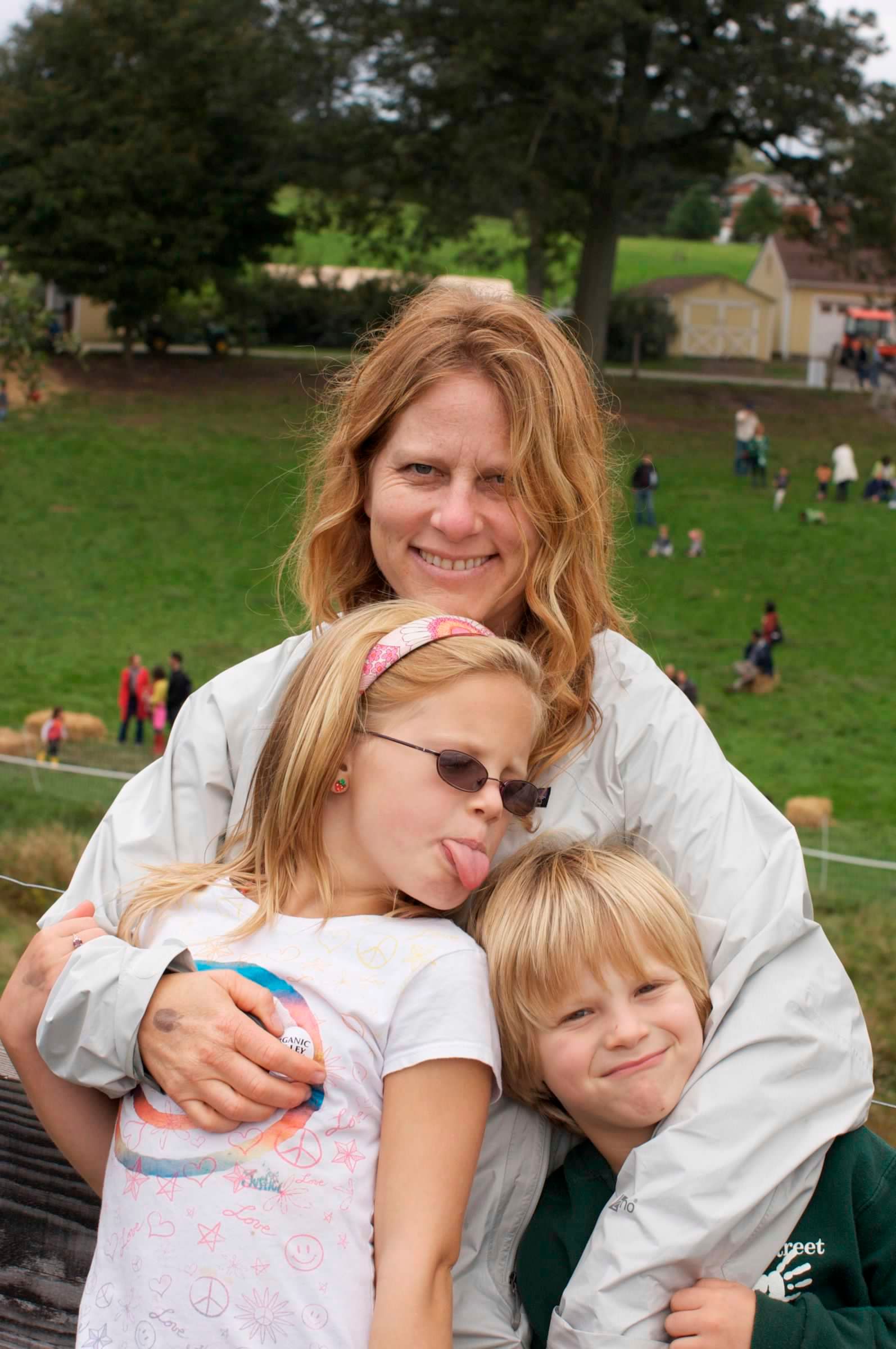Parenting Hack to Diffuse Power Struggles
Andrea Robbins • June 24, 2025
It Really Works!

One Simple Shift to End Power Struggles
If it feels like every little thing turns into a standoff lately; getting dressed, brushing teeth, turning off the screen, you’re not alone!
But here’s the thing:
Power struggles aren’t really about the socks or the screen time.
They’re about something deeper:
👉 Kids seeking a sense of control and connection.
When kids feel powerless, they push back in the only ways they know how, through their behavior (read: defiance). And as parents, it’s easy to respond with more firmness or frustration, but that often fuels the resistance instead of easing it.
So what can you do instead?
Try this tool 🛠:
Choice Within Limits
Offering two acceptable choices gives kids the autonomy they crave while keeping you in the leadership role.
Examples:
➡️ “You can brush your teeth now or after your pajamas are on. Your choice.”
➡️ “Do you want to turn the screen off in 3 minutes or 5 minutes?
➡️ "Would you like the blue cup or red cup? Let me know"
This small shift can:
✔️ Reduce battles
✔️ Increase cooperation
✔️ Build your child’s decision-making skills
✔️ Preserve your energy and sanity
💡 Pro Tip:
Always lead with connection. Before offering choices, pause to make eye contact, offer a warm tone or touch, and acknowledge their feelings.
Kids who feel connected are more likely to act cooperative.
Remember:
Connection first. Then collaboration.
Small shifts lead to big changes.
If you want support applying this to real-life parenting moments schedule a call here.
You’ve got this. 💛
Andrea Robbins, M.Ed
Parenting Coach | Parenting Vistas

Every parent has had that moment, your child does something you just told them not to do, and before you can stop yourself, frustration takes over, and you’re saying, “That’s it, no iPad for a week!” We’ve all been there. It’s not because we’re bad parents, it’s because we care and we want to teach them right from wrong and help them understand boundaries. But here’s something most of us were never taught: Punishment might stop the behavior for now, but it doesn’t help our kids build the skills they need for next time. Here’s a simple shift that changes everything : Before you punish, pause . Take a deep breath and ask your child, “What’s going on? Can you help me understand?” That one curiosity question does so much; it calms your child, opens up communication, and keeps your connection strong. It’s not giving in. It’s guiding. It tells your child, “I’m here with you, not against you.” That sense of safety is what helps them calm down enough to learn from what happened. And over time, it teaches your child self-control, empathy, and problem-solving skills that punishment can’t. Next time your child pushes your buttons, try that pause. Your relationship and your child’s self-control will thank you. If you’d like more tools like this to help you stay calm and connected while still holding limits, let’s talk. 👉 Set up a free consult call and I’ll help you find strategies that actually work for your family.

Turn Morning Chaos Into Calm With Just One Change I remember mornings that felt like a whirlwind, fights about getting dressed, endless reminders, and hearing “I don’t want to go to school” on repeat. By the time I dropped my kids off at school, I was so tense… it would take me until mid-morning to calm down and feel like myself again. Those chaotic mornings affected us all and were not a pleasant way to start the day. Over time, I realized that one small shift could change the entire rhythm of our mornings, helping both me and my kids start the day calmer, connected, and more present. Instead of rushing, nagging, or repeating yourself, try giving a simple choice to your child: “Do you want to wear the blue shirt or the red shirt?” “Do you want to brush your teeth first or put on your socks first?” A small choice gives your child a sense of control, reduces power struggles, and creates a calmer, smoother start for everyone. Suddenly, mornings aren’t a battle; they’re a chance to practice cooperation and connection. Try this tomorrow morning and notice the difference. A little choice can go a long way. Pro Tip : Pair the choice with a calm, steady presence, because your composure matters just as much as the options you offer. Want more practical tips for calmer mornings? Follow me on Instagram @Parenting.Vistas for daily strategies, resources, and tools to turn chaos into connection.

Last week, a parent I work with told me about a battle she had with her child over putting on shoes. Her 5-year-old refused. She could feel her frustration building. They were running late, and she was about to say, “Just do it now!” But instead, she took a breath and said, “Seems like you really wish you didn’t have to put your shoes on right now, huh?” Her daughter paused, looked at her, and said softly, “Yeah.” And just like that, the fight was over. She still didn’t want to do it, but she stopped resisting. Within a minute, she had her shoes on, and they were out the door. Here’s why that sentence works: It acknowledges the feeling behind the behavior. Kids need to feel seen before they can shift. It takes you out of the power struggle. When you show empathy, you’re no longer the “enemy”; you’re on the same team. You’re not giving in or letting go of your boundaries; you’re connecting first. And when kids feel understood, they’re far more willing to cooperate. It might sound like a small tweak, but saying “You really wish you didn’t have to…” sends a huge message, “I see you and care about how you feel”. Next time your child digs in their heels, take a breath and try it. You might be surprised at how quickly things shift when you lead with connection and empathy instead of control. Andrea Robbins, M.Ed Parent Coach & Educator P.S. If you’re ready to stop the daily power struggles for good, my coaching program equips parents to create calm, confident, and connected homes without yelling, punishments, or rewards. Spots are limited, so click here to learn more and grab your spot today:

You call their name. Once. Twice. Three times. Nothing... Sound familiar? Whether it’s your 5-year-old working intently on their Legos or your teen glued to their phone, being ignored by your child can feel infuriating. You start to feel that familiar tension build. You feel invisible and maybe even disrespected. But here’s the truth: When your child or teen “ignores” you, it’s rarely about attitude. It’s about capacity and connection. Younger kids can get completely absorbed in what they’re doing. Teens, meanwhile, are working hard to balance independence, identity, and social life. Both need your help regulating and reconnecting, not reacting. 3 ways to handle those moments (no matter their age) 1. Get their attention before giving direction. Calling from across the room rarely works. Move closer. Gently touch your young child’s shoulder or say their name. Wait for eye contact. With teens, timing matters. Pick your moment. Connection lands best when they’re not already absorbed in something. 2. Stay calm (even when you want to explode). It’s okay to feel frustrated, but when you yell, kids get defensive, not cooperative. Lower your tone, take a breath, and model calm. Whether they’re five or fifteen, your calm is the anchor that helps them find theirs. 3. Lead with connection, not correction. Start by noticing what they’re doing: “Looks like you’re really into that game.” “You seem distracted, long day?” Feeling seen helps them be open to what’s next, and they’re more likely to listen. When your child ignores you, it’s easy to take it personally. But often, it’s not rejection, it’s just development. Connection doesn’t mean perfect communication in the moment. It means showing up, over and over again, in calm and consistent ways that remind your child or teen: You matter. I’m here. And we can figure this out together. Best, Andrea Robbins, M.Ed | Parenting Vistas | Parent Coach P.S. If you’re ready for more calm, cooperation, and connection in your family, schedule a free call today.

How Play Builds Both Development and Connection If you’ve ever watched your child build a fort out of couch cushions, turn sticks into magic wands, or talk to imaginary friends, you’ve seen the incredible power of play in action. Play isn’t “just fun.” It’s how children make sense of the world, develop social and emotional skills, and practice problem-solving in a safe space. Neuroscientists and child development experts remind us that play helps children integrate their experiences and strengthen the brain connections needed for learning, emotional regulation, and empathy. But many parents may not realize that play isn’t just important for children’s development; it’s a powerful way to connect with your child. When a parent joins in, even for just a few minutes, it sends a clear message: “I see you. I enjoy being with you.” That sense of connection strengthens trust, cooperation, and communication far more than lectures, rules, or rewards ever could. The key is to let your child take the lead. Follow their imagination, ask questions, and show curiosity. It’s not about structuring lessons or guiding the “right way” to play; it’s about being present and engaged in their world. Next time your child invites you to play, see it not as a break from your to-do list, but as an opportunity. Play with them, learn with them, and most importantly, connect with them. The benefits will ripple far beyond the game itself, building both their development and your relationship in ways that last a lifetime. Try this today: Spend just 10 minutes following your child’s lead in play. No agenda. No multitasking. Just join in. Meet them where they are. The more connection you build through play, the less you’ll find yourself yelling. Best, Andrea Robbins, M.Ed | Parent Coach | Parenting Vistas P.S. If you'd like to make play your new parenting superpower , book a consult call here.

You give your child the wrong color cup, and they lose it. Again. You’re exhausted, frustrated, and wondering how something so small could cause such a big explosion. Here’s the truth: it’s not about the cup. It’s about control, autonomy, and overwhelm. Tantrums Aren’t “Bad Behavior” When your child melts down, they’re not being manipulative or dramatic; they’re communicating. Tantrums are your child’s nervous system saying, “This is too much for me right now.” Most young children simply don’t have the language or emotional regulation skills to say: “I feel out of control.” “My day isn’t going how I wanted.” “This tiny thing pushed me over the edge.” So instead, they cry, yell, or throw things. And while it feels personal, it’s really not about you. It’s about a child whose brain and body are overwhelmed. Seeing the Need Beneath the Behavior When you can remind yourself that it’s not about the cup (or the sandwich cut the “wrong” way, or the socks that “feel weird”), something shifts. You start to see the need behind the behavior. Maybe your child needs connection. Maybe they’re feeling powerless and need a sense of control. Maybe their nervous system is overloaded and needs help calming down. When you look beyond the behavior and see the unmet need, it becomes easier to respond with curiosity and empathy instead of frustration. Staying Calm: The Real Teaching Moment It’s tempting to react: to yell, to punish them, or try to reason with them in the middle of the chaos. But what your child needs most in that moment is your calm presence. Every time you stay grounded during their meltdown, you’re showing them what emotional regulation looks like. No reward or punishment can teach that the way you can. Your calm tells your child, “You’re safe. I’ve got you.” And that’s what helps their nervous system settle. 3 Things to Try Next Time When the next “wrong cup” moment happens, try this: 1. Pause and breathe. Take a moment to regulate yourself before responding. 2. Name and validate the feeling. “You really wanted the other cup. That’s so frustrating.” Feeling seen helps your child calm faster. 3. Offer choice within limits. “Would you like the blue cup or the red cup?” This gives your child a sense of control. Tantrums aren’t a sign you’re failing as a parent. They’re an opportunity to build your child’s emotional intelligence and to strengthen your connection in the process.

If You’re Anything Like My Clients… If you’re anything like the parents I work with, you love your kids deeply. You’d do anything for them. And yet sometimes you find yourself yelling, snapping, or saying things you wish you could take back. You go to bed at night feeling soul-level exhausted. Replay the moments that went sideways. Promise yourself that tomorrow you’ll do better. But then tomorrow comes, and the chaos, the noise, the not listening, and the never-ending demands of the day push you past your limits, into the same patterns. Sound familiar? You’re Not Alone So many parents tell me the same thing: “I’m so tired of yelling. It’s not who I want to be.” They describe lying awake, feeling guilty, ashamed, and overwhelmed. They worry about the impact on their child or what this means about them as a parent. Here’s the truth I want you to hold onto: You’re not broken. You’re not failing. You’re human. You’re a parent trying your best with the tools you have. That matters, AND I get it! My Turning Point When my daughter was 3, she told me that when I yelled, it felt like I didn’t love her. That was the wake-up call I didn’t know I needed. I grew up in a home where yelling was the norm, and I never wanted my kids to feel that same confusion, fear, or disconnection. I wanted them to grow up feeling safe to speak up, to make mistakes and take risks without shame, and to know my love is not conditional upon their behavior or performance. That moment set me on a different path of parenting, one that’s calmer, more intentional, and rooted in connection, not control. Ultimately, this led me to the work I do today, supporting other parents Why You Yell (Even When You Don’t Want To) Yelling is often a stress response, not a character flaw. When your child’s behavior pushes your buttons, your nervous system interprets it as a threat, and your brain flips into fight, flight, or freeze mode. You don’t choose to yell; it’s your body’s way of saying, “I’m overwhelmed.” The problem isn’t that you lose your cool sometimes; it’s that you expect yourself to stay calm without the right support or regulation tools in place. The Shift: From Guilt to Growth Guilt can actually be a doorway. It shows you care. But staying stuck in shame keeps you from growing. The real work is learning how to pause, understand your triggers, and reconnect both with yourself and your child. When you learn to regulate your own emotions, you model calm for your child. You create a home where connection, not control, leads the way. You Deserve Support You don’t have to figure this out alone. Parenting was never meant to be done in isolation or perfection. That’s why I teach parents how to move from chaos to connection through tools that actually work in the moment. If you’re ready to stop ending your nights in guilt and rumination and start showing up with calm confidence, I created a brand new, FREE resource to help you get started: 👉 5 Tools to Keep Your Cool When Your Child is Losing Their Sh*t (You can send me your email, and I’ll send you a copy) This guide includes simple, practical strategies you can use in the moment when your kid is having a tantrum, refusing to listen, or pushing every single button you have. You’ll learn how to: ✨ Stay grounded when emotions run high (theirs and yours) ✨ Interrupt the yelling cycle before it spirals ✨ Build emotional safety, even in hard moments ✨ Repair and reconnect after things go sideways Because calm isn’t something you fake, it’s something you practice. And the more you do, the more your child learns to do the same. Best, Andrea Robbins, M.Ed | Parenting Vistas | Parenting Coach P.S. If you're looking for support that goes deeper than the above guide, schedule a free call here . 1:1 support will provide you with personalized tools, support, and accountability. .

Parenting in Uncertain Times: How to Be a Calm Anchor for Your Kids The Weight of the World Is Hard to Escape. Every morning, it seems the world is a little heavier than the day before. You wake up to alerts on your phone, headlines on the front page, the endless 24-hour news cycle; they all scream chaos. It’s overwhelming. And here’s the thing: our kids feel it too. Even if they don’t understand, they sense when we’re unsettled, anxious, or distracted. What Our Kids Really Need From Us As a parent coach, I remind myself, and the parents I work with of this simple truth: Kids don’t need us to have all the answers They need us to be their safe place. When the world feels uncertain, connection at home matters more than ever. Model Calm, Teach Resilience If you can model calm during hard moments, your child learns resilience. They see that even when things feel shaky, it’s possible to stay steady. Remember : If you feel supported, you show up with more patience, presence, and power. Don’t let uncertainty be an excuse for stress or yelling. Don’t use circumstances to justify impatience or frustration. Commit to calm even in uncertain times. Your calm presence is one of the best teachers your child will ever have. Practical Ways to Anchor Your Family 💛 Keep routines where you can. Predictable rhythms such as meals, bedtimes, and family rituals create a sense of safety for kids. 💛 Talk honestly, but age-appropriately. Be open about what’s happening in the world, and filter it through what your child can understand. Most importantly, help them notice the difference between what they can control vs. what they cannot, and reassure them. 💛 Build small moments of joy. Play a game, go for a walk, or have a spontaneous dance in the kitchen. These moments remind kids (and you) that even when the world feels heavy, fun and joy are possible. No Excuses for Dysregulation There’s no excuse for passing your stress onto your kids. That doesn’t mean you’ll never lose your cool, but it does mean owning your reactions and doing the work to regulate yourself (and repair when needed). Your children need your calm more than your commentary. The Heart of It All You don’t have to be perfect. You just need to be present. Your calm presence, even in small ways, is the most powerful gift you can give your children right now. ➡️ Save this as a reminder for the hard days. 💬 I’d love to hear from you: what helps you stay grounded when the world feels overwhelming? Best, Andrea Robbins, M.Ed | Parent Coach | Parenting Vistas P.S. If staying calm in these uncertain times feels hard, you’re not alone. That’s exactly the kind of work I do with parents- helping them build patience, presence, and connection at home. Book a free call here.

After years of teaching, raising my own kids, and now coaching parents, there are a few truths I wish I had learned sooner. They’ve changed the way I show up, not only for my children but also for the families I support. When my kids were little, I remember thinking, “Why does everything feel like a battle? Why is this so hard?” One morning, my son refused to put on his shoes. I tried reasoning, then bribing, then threatening that we’d be late. By the time we got out the door, I was frazzled, he was crying, and the whole day felt off. When my daughter was a toddler, I’ll never forget the grocery store meltdown over crackers. At the time, I thought she was being “difficult.” Now I know she was simply overwhelmed, and I didn’t yet have the tools to see it that way. And when they both hit middle school, suddenly every request felt like an argument, whether homework, screens, or anything else. I used to think they were just being stubborn. What I didn’t realize was that they were craving independence, and my automatic “no’s” were fueling power struggles instead of building trust. Looking back now, I realize I was missing a few key truths about parenting. Truths that would have made those mornings so much smoother. These are lessons I learned later as a parent coach, but oh how I wish I had known them sooner. Here they are: 1️⃣ Kids aren’t giving us a hard time; they’re having a hard time. I used to interpret big emotions and meltdowns as disrespect or defiance. What I’ve learned is that behavior is communication. A child acting out is really saying, “I need help.” This shift allows us to respond with curiosity instead of frustration. 2️⃣ Connection is the shortcut. For so long, I thought my job was to fix every behavior. But the truth is, when kids feel safe, seen, and understood, so many challenges soften on their own. Connection opens the door to cooperation faster than any punishment, bribe, or reward ever could. 3️⃣ Regulation starts with me. I once believed that if I just had the perfect script or strategy, things would go smoothly. What I know now is that kids borrow our calm. When I regulate myself: slowing down, breathing, staying grounded, it makes it so much easier for my kids to follow my lead. Parenting doesn’t have to be about constant battles. Small shifts in perspective create big changes in connection and cooperation. Which one of these do you wish you had learned sooner? Hit reply and let me know—I’d love to hear your perspective. Best, Andrea Robbins, M.Ed | Parent Coach | Parenting Vistas P.S. If you’re ready to put these shifts into practice but feel stuck on the “how,” I can help. In my coaching sessions, we break these ideas down into simple, doable steps that bring more calm and cooperation into your home. Click here to book a free call with me, and let’s talk about what would make the biggest difference for your family.

The Power of Saying Yes (Without Losing Your Boundaries) As parents, it can feel like we’re on repeat with the word “no.” “No, not right now.” “No, that’s too messy.” “No, we don’t have time.” Limits are important. But kids (of all ages) also need to hear “yes.” Saying yes doesn’t mean giving in to everything; it means finding ways to affirm, encourage, and connect. Practice Saying YES Look for the “yes” inside the request. “Can we have ice cream?” “Yes, on Friday after dinner.” Say yes to independence. “Yes, you pick out your own clothes today.” Say yes to connection. “Yes, let’s read one more book.” Say yes to flexibility. “Yes, you can wear your costume to the store.” Here are 5 reasons why “yes” can be one of the most powerful tools in your parenting toolbox: 1. Builds Connection and Trust “Yes” communicates to your child: I see you. I hear you. What you want matters. Toddler: “Yes, you can wear your rain boots to the store.” Tween: “Yes, I’d love to hear about that book you’re into.” Teen: “Yes, I’ll drive you to your friend’s game this weekend.” Even small yeses build trust and help kids feel valued. 2. Encourages Autonomy and Confidence When you say yes, you give kids chances to make choices, try new things, and learn from mistakes. Toddler: “Yes, you can pour your own milk.” Tween: “Yes, you can make your own lunch for school tomorrow.” Teen: “Yes, you can plan the family dinner one night this week.” Saying yes grows independence and decision-making skills. 3. Balances Out the No’s Kids hear no all day long for safety, schedules, or practicality. Finding spots for yes helps prevent constant battles. Toddler: “Yes, we can play for five more minutes before clean-up.” Tween: “Yes, you can ride your bike after homework’s done.” Teen: “Yes, you can stay up later on Friday night since there’s no school Saturday.” The more reasonable yeses you sprinkle in, the easier it is for your no’s to stick. 4. Supports Emotional Regulation Positive responses lower frustration and reduce power struggles. A well-timed yes can turn a meltdown into cooperation. Toddler: “Yes, you can hold my keys while we walk inside.” Tween: “Yes, I understand you need a break before starting homework. Let’s set a timer.” Teen: “Yes, I get why you’re upset. Let’s when you’re ready.” “Yes” models flexibility, and kids mirror that back. 5. Creates Joy and Memories Sometimes, the best moments come from saying yes to play, adventure, or a silly idea. Toddler: “Yes, let’s read one more book before bed.” Tween: “Yes, let’s have a game night inside the fort.” Teen: “Yes, let’s grab ice cream after practice.” These small yeses often become the moments your kids remember most. Remember: Boundaries Still Matter You don’t need to say yes to everything. The goal is to say yes whenever you reasonably can. That way, when you must say no, your child is more likely to hear it and accept it without a fight. ✨ Try this today: Notice one place where your automatic response might be “no” and see if there’s room for a “yes.” If saying “yes” feels hard or you’re not sure how to balance it with boundaries, I can help. Together, we can find the right rhythm for your family. Schedule your free call here.

